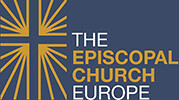This Garment of Salvation
Category: Bishop's Sermons
Speaker: The Rt Rev Mark D.W. Edington
Tags: jesus, incarnation, mary, body, incarnational
The Cathedral Church of the Holy Trinity, Paris
August 16, 2020 † Saint Mary the Virgin
Text: Isaiah 61:10: “…my whole being shall exult in my God;
for he has clothed me with the garments of salvation…”
We give ourselves a small moment of refreshment today, a bit of manufactured shade from the heat of August’s ordinary time. Today we have escaped the discipline of the Lectionary for our Sunday readings, something we can usually only do with the permission of the bishop. Well, what he doesn’t know won’t hurt him.
Today we are observing yesterday’s feast of the Assumption of Mary the mother our Lord; or, as that is translated into Anglican, we are observing today the feast of Saint Mary the Virgin. The observance makes for an annual holiday in France, but it is unusual for us to take note of it at all; when the police called us earlier in the week to ask us what we were doing for the feast of the Assumption, we had to tell them—nothing. Yet it gives us a moment to direct our attention to the young woman of Nazareth upon whom the whole of our story turns.
I will begin by confessing to you, and to everyone listening to us on the internet, that Mary was not a major focus of attention in the church of my youth. She pretty much made one appearance each year, wrapped in a blue blanket, and sitting by the manger in the Christmas pageant.
She sat there pretty silently, because when the parents who wrote the pageant went looking in the Bible for words to write for her into their script, what they found there were the words you just heard Dr. Wolff read from the gospel, which made it sound almost as though this young, not-yet-married woman was not just happy but triumphant about becoming pregnant. And that was not an idea those parents wanted to set loose among the youth of the church.
It was not until much later in my life, and specifically because of one teacher in divinity school, that I began to glimpse the importance—and the promise—of what I had been missing. But I am getting ahead of myself.
We say of ourselves as Anglicans that the distinctive aspect of our theological thinking, the deep well in our understanding of the Christian tradition, is our focus on the incarnation of God in Christ. We call our theology incarnational, something that traces back all the way to the first great Anglican theologian, Richard Hooker.
What we mean by all of that is a very simple, but very radical idea; that by choosing to enter into this life with us as Jesus of Nazareth in order to save us from ourselves, God has chosen to make the mundane stuff of this world—our cultures, our communities, our organizations, our day-to-day lives, and these mortal bodies of flesh—to be the place where our salvation is worked out.
When you start to evaluate things in terms of that commitment, very quickly the Christian faith is revealed as something that is both elegantly simple and outrageously difficult.
An incarnational faith requires us to imagine that our principles are not meant to be mere abstractions, but a rule of life. It demands of us that we take seriously the idea that our faith is meant to change not just ourselves, but that by acting in faith, we are meant to change the world around us—the place where all that mundane stuff of the world gets organized into systems that distribute power, privileging some while oppressing others.
And the hardest thing of all about an incarnational faith is that it insists that we take ourselves seriously—not as things to be toyed with by the winds of popular culture or social media influencers, but as children of God. We are not just individual believers working out our salvation in fear and trembling; together we are the very flesh and blood of the risen, working, redeeming body of Christ in the world. We are meant to be in relationship with the holy, a relationship that we allow to become so serious that it can change our lives in ways we would not ourselves choose—and might even think are risky, or dangerous, or irresponsible.
It is an example of just such a life in relationship with God that we find in Mary of Nazareth. This is not a thing for theological speculation or intellectual analysis. There is nothing abstract about the depth of Mary’s faithful devotion to God. It brings forth a human child. And through her faith, all of humanity, all of us, become the mundane stuff where the world’s reconciliation with its loving God will be worked out.
I think this must be why, down through a hundred generations of Christians, Mary’s faith and Mary’s example has been so central to the devotion of that vast majority of the faithful who are not Protestant theologians.
We can say the words of the creed and affirm the two natures in one person of Christ; but we cannot quite grasp it. The birth of a child we can understand.
We can hear again and again the story of how Christ takes upon himself the sin of all humanity for all time and redeems it in willingly going to the Cross. But we cannot quite understand how it all works, much less imagine our part in it. Yet the desperate worry of a parent for a child, and the inconsolable mourning of a mother for her son—we understand that in our bones.
Jaroslav Pelikan, the great historian of the Christian faith, was among my teachers in divinity school; and it was Professor Pelikan, a man raised in a Lutheran home, who first caused me to inquire more deeply into what I was perhaps missing about Mary. In the year I entered seminary, Professor Pelikan published Mary Through the Centuries, a magnificent study of the cultural significance of Mary throughout the history of our faith.
Pelikan’s beautiful telling of Mary’s story in our tradition draws out different ways in which people of two faiths have made meaning of the example and person of Mary: The Daughter of Zion, the Second Eve, the Heroine of the Qu’ran, the Adornment of Worship, the Mother of Sorrows, the Model of Faith, the Woman Clothed With the Sun, the Queen of Heaven, and my favorite—the Face that Most Resembles Christ’s.
It is, after all, through Mary’s own humanity, Mary’s own flesh, that Jesus takes on his own; and by giving birth to the body of Jesus, Mary gives birth to the Body of Christ, and to all that means for us as living members of that Body.
Pelikan’s last way of describing Mary is as “the Woman for All Seasons—and all Reasons.” As much as any other idea, that brings her right into this hour with us. We surely are in a season of reflecting deeply on the weaknesses and betrayals of these bodies of flesh; they are the untrustworthy earthen vessels of this treasure of souls we have.
And yet this flesh is also the place where, through Mary’s act of faith, God has determined to work out our redemption. They are our garments of salvation, the adornment our souls have been given for entering into the presence of the sacred here on earth. I can still hear Professor Pelikan ending a lecture by reading to us from Gerard Manley Hopkins’ poem on Mary:
Of her flesh he took flesh:
He does take fresh and fresh,
Though much the mystery how,
Not flesh but spirit now
And makes, O marvellous!
New Nazareths in us,
Where she shall yet conceive
Him, morning, noon, and eve...
Imagine that; Mary, our most faithful sister, conceiving new possibilities of the sacred in us. May we know in ourselves faith like Mary’s to accept God within, that we, like her, may pass from the things of earth to the things of heaven. Amen.

